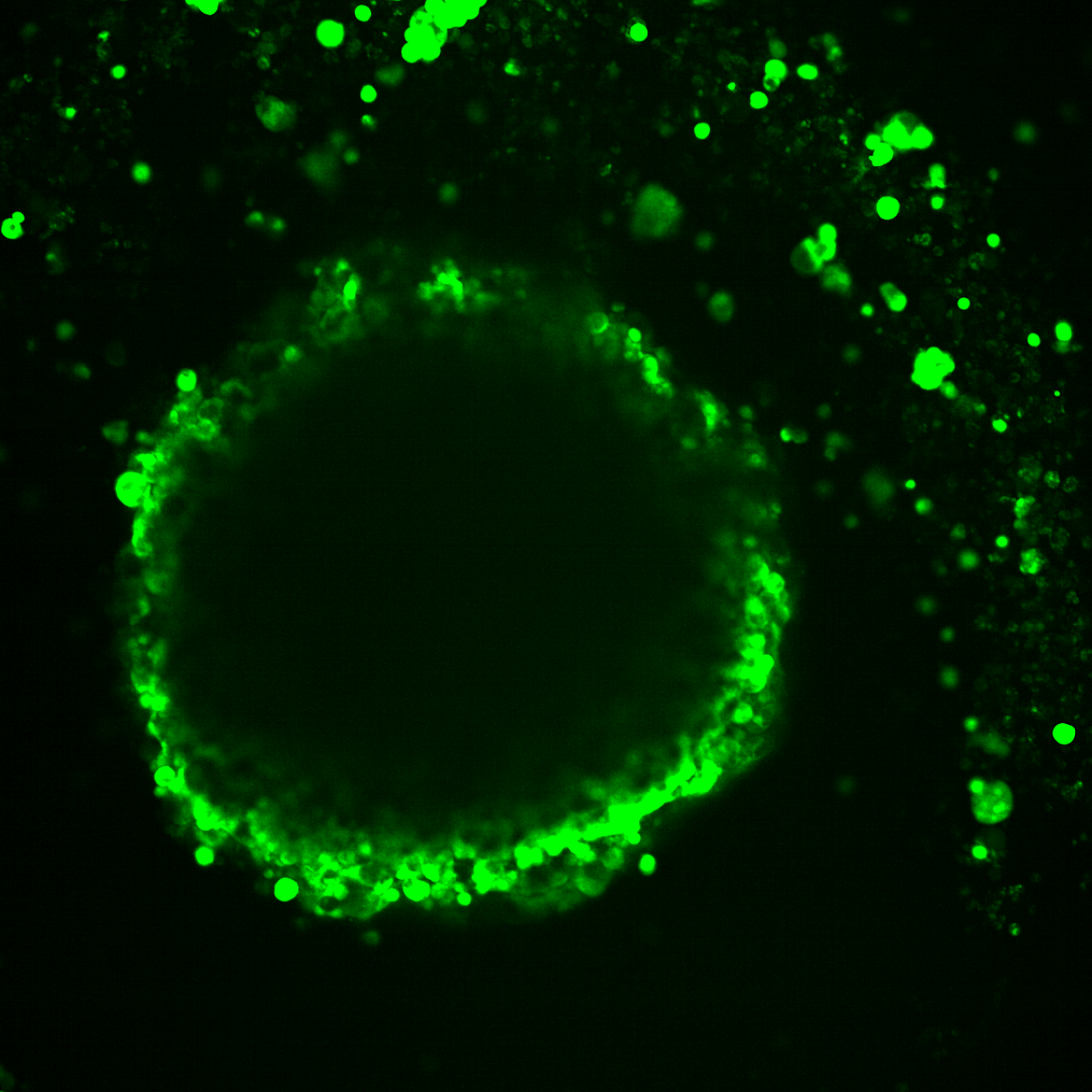Reviewed by Danielle Ellis, B.Sc.Jun 26 2023
Variations in gene activity based on where a cell is in a tumor have been discovered by researchers with the help of 3-D models of ovarian cancer tumors.
 Image shows differences in cell layers’ fluorescent-dye uptake in a model of high-grade serous ovarian cancer. Image Credit: David B. Morse, PhD, Harvard.
Image shows differences in cell layers’ fluorescent-dye uptake in a model of high-grade serous ovarian cancer. Image Credit: David B. Morse, PhD, Harvard.
This illustrates how the location of a cell and environment in a cancerous tumor could strongly impact which genes are active and the role of the cell in cancer’s biology.
More particularly, the research group co-headed by scientists at the National Center for Advancing Translational Sciences (NCATS), part of the National Institutes of Health, displayed that gene activity in cells at or near a tumor’s surface varied from that of cells nearer to the tumor center.
The method pairs the use of technology to disclose the genetic activity of single cells present inside a tumor with fluorescent dyes that get distributed into tumors. The work performed could enable scientists to study how the same diseases could change in people and progress differently.
This study performed could help clinicians in determining treatment strategies centered on particular areas in tumors. This could result in better therapies for cancers and other diseases.
The research group reported its study outcomes in the journal Cell Systems on June 21st, 2023.
It’s commonly accepted that a cell’s location and surrounding environment influence the cell’s identity. Two cells can be genetically identical but have different cellular identities, meaning different genes are turned on because of their location and environment. Our goal was to establish a straightforward method to study this concept in multiple settings.”
Craig Thomas, Translational Scientist, National Center for Advancing Translational Sciences
The newly-developed system referred to as Segmentation by Exogenous Perfusion, or SEEP, takes the benefit of a dye that gets diffused into cells across a tumor at a definable rate. Quantifying how much dye gets into separate tumor cells offers data on the cell’s location and, particularly, its access to the outside surrounding.
With the help of computational techniques, the scientists linked this data to the gene activity of the cells, thereby allowing the scientists to link to the cells’ identities along with their location.
Understanding the relation of cells to each other and the effects of their positions in space has been a fundamental question in cancer, neurological disorders, and other areas.”
Tuomas Knowles, Study Co-Author, University of Cambridge
Three kinds of 3-D laboratory models—organoids, spheroids, and mouse models—made from human ovarian cancer cells were utilized by scientists. Spheroids are known as 3D clusters of cells grown in a laboratory dish that has the potential to mimic a few traits of tissues and organs.
Organoids, also grown in a dish, are known to be highly complex 3-D models that more closely copy organ and tissue function and structure. As far as the mouse models are concerned, scientists implanted human ovarian cancer cells to develop tumors.
It’s critical to understand that not every cell in a tumor will be exposed to a drug in the same way. A cancer drug might kill the cells on the surface of a tumor, but the cells in the middle are different and affected differently. That’s likely contributing to why some therapies fail.”
Tuomas Knowles, Study Co-Author, University of Cambridge
The SEEP method disclosed that the tumor cells next to the tumor surface were more likely to experience cell division compared to cells that are closer to the tumor center. Also, cells on the surface of tumors turn on genes to safeguard them from immune system responses.
Such gene responses have been linked to how the tumor hides from the immune defenses of the body.
Scientists were surprised at the variations happening in gene activity between cells on or near the surface and those more inside the ovarian cancer tumor models.
The findings could help researchers gain better insights into how tumors have been structured. Such data could result in improved treatments. One possible cancer treatment method is to target cells that will probably be affected in various areas of tumors.
“Certain tumor cell types are susceptible to certain therapies. Knowing where cells are located and their levels of accessibility in the tumor could help us decide how to use drugs in combination. It could help tell us how long to give a drug and when to move on to other therapies,” noted first author and Harvard University medical student David Morse.
Source:
Journal reference:
Morse, D. B., et al. (2023) Positional influence on cellular transcriptional identity revealed through spatially segmented single-cell transcriptomics. Cell Systems. doi.org/10.1016/j.cels.2023.05.003